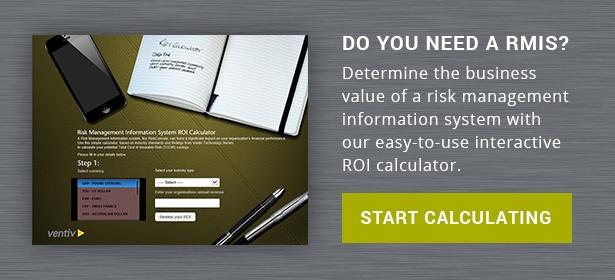 Many organizations lease assets such as real estate, airplanes, trucks, ships and construction and manufacturing equipment. Because of the prevalence of leasing, it's important for users of financial statements to have a complete and understandable picture of an organization’s leasing activities. For this reason, the Financial Accounting Standards Board (FASB) and the International Accounting Standards Board (IASB) have issued guidance and a proposal to change the accounting treatment for lease obligations. This isn’t new. FASB/IASB have been working on this revision since 2005. For those who like to get the details, see this FASB update from last month. (These changes are supposed to be effective in 2016, but given the magnitude of the impact, it could well be 2017 or 2018.)
Many organizations lease assets such as real estate, airplanes, trucks, ships and construction and manufacturing equipment. Because of the prevalence of leasing, it's important for users of financial statements to have a complete and understandable picture of an organization’s leasing activities. For this reason, the Financial Accounting Standards Board (FASB) and the International Accounting Standards Board (IASB) have issued guidance and a proposal to change the accounting treatment for lease obligations. This isn’t new. FASB/IASB have been working on this revision since 2005. For those who like to get the details, see this FASB update from last month. (These changes are supposed to be effective in 2016, but given the magnitude of the impact, it could well be 2017 or 2018.)
As a risk manager, you may say, “Yes, this is interesting, but what does that have to do with me?” The answer could be "A lot!" depending on the structure of your property and casualty insurance program and your surety bond program. For example, when the forward obligations for leases have to appear on the liability side, the accounting rule change will make a pretty significant change in your company's balance sheet. Generally speaking, it will give the appearance that your organization has a lot more debt than was previously disclosed. This will likely have immediate impact in two areas: casualty collateral and surety collateral.
If you manage a significant surety-bond program to secure various obligations, such as real estate, utilities and certain types of performance contracts, you know the pain of having to actively manage the outstanding collateral on those bonds. To be smart, you track surety in your RMIS on a regular basis to terminate bonds that are no longer needed or to re-size surety obligations regularly to avoid over-security. All of this is done to manage the size of surety collateral necessary to support your program. That collateral commitment is highly dependent on the structure of your balance sheet. As balance sheets weaken, or appear to weaken, surety companies increase the amount of collateral requirement, thus depleting cash (often in the form of a standby letter of credit from your banks) on the other side of your balance sheet.
The same is true with the collateral that your casualty insurer is requiring to support future premium and loss obligations on occurrence-form policies. As a risk manager, you know that this collateral obligation in your primary casualty program can be a boat anchor around your neck in terms of your relationship to a casualty insurer.
It will be important for risk managers to gain an understanding of the changes that will happen to the balance sheet as a result of this FASB/IASB standard change. It will also be important to discuss the changes promptly with insurer and surety partners to develop an understanding of the impact on collateral requirements. And finally, it will be important to huddle with your finance executives to come to a shared understanding of that impact and their readiness to make provisions for the expense increases.
The accounting change related to lease obligations may not have hit your radar yet, but it probably should.
 Jeff Gehrke is Ventiv's Chief Risk Technology Evangelist. Contact Jeff at Jeff.Gehrke@ventivtech.com or ++1.720.445.9531. Connect with Jeff on LinkedIn: https://www.linkedin.com/in/jeffjgehrke
Jeff Gehrke is Ventiv's Chief Risk Technology Evangelist. Contact Jeff at Jeff.Gehrke@ventivtech.com or ++1.720.445.9531. Connect with Jeff on LinkedIn: https://www.linkedin.com/in/jeffjgehrke








 Many organizations lease assets such as real estate, airplanes, trucks, ships and construction and manufacturing equipment. Because of the prevalence of leasing, it's important for users of financial statements to have a complete and understandable picture of an organization’s leasing activities. For this reason, the Financial Accounting Standards Board (FASB) and the International Accounting Standards Board (IASB) have issued guidance and a proposal to change the accounting treatment for lease obligations. This isn’t new. FASB/IASB have been working on this revision since 2005. For those who like to get the details,
Many organizations lease assets such as real estate, airplanes, trucks, ships and construction and manufacturing equipment. Because of the prevalence of leasing, it's important for users of financial statements to have a complete and understandable picture of an organization’s leasing activities. For this reason, the Financial Accounting Standards Board (FASB) and the International Accounting Standards Board (IASB) have issued guidance and a proposal to change the accounting treatment for lease obligations. This isn’t new. FASB/IASB have been working on this revision since 2005. For those who like to get the details,  Jeff Gehrke is Ventiv's Chief Risk Technology Evangelist. Contact Jeff at
Jeff Gehrke is Ventiv's Chief Risk Technology Evangelist. Contact Jeff at 



